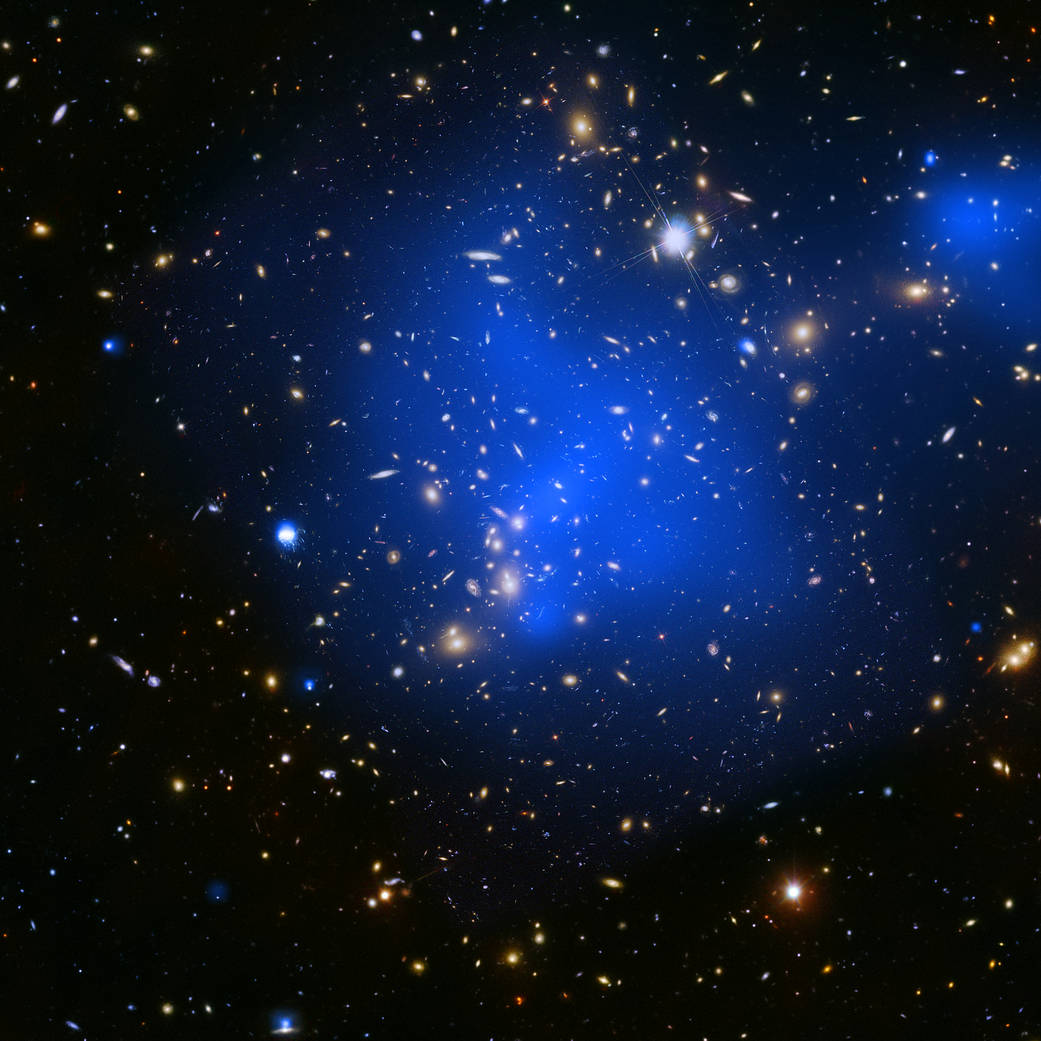Humanity has “eyes” that can detect all different types of light through telescopes around the globe and a fleet of observatories in space. From radio waves to gamma rays, this “multiwavelength” approach to astronomy is crucial to getting a complete understanding of objects in space.
This image is of galaxy cluster Abell 2744. Galaxy clusters are the largest objects in the universe held together by gravity. They contain enormous amounts of superheated gas, with temperatures of tens of millions of degrees, which glows brightly in X-rays, and can be observed across millions of light years between the galaxies. This image combines X-rays from the Chandra X-Ray Observatory (diffuse blue emission) with optical light data from the Hubble Space Telescope (red, green, and blue).
See a selection of images of different kinds of light from various missions and telescopes have been combined to better understand the universe.
Image Credit: NASA/CXC; Optical: NASA/STScI



























